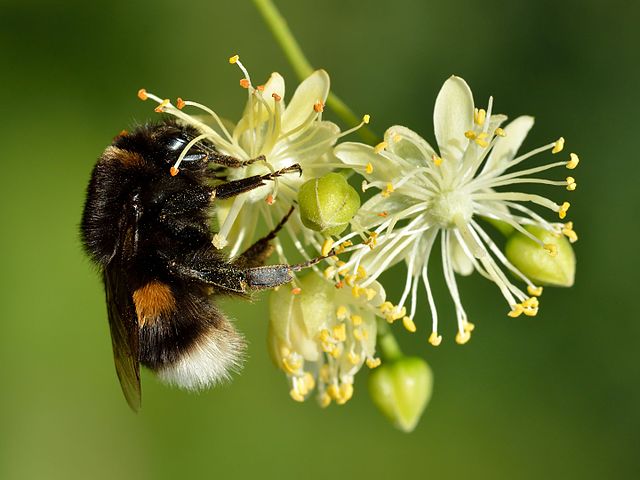If the queen is lost, a worker can take over

Normally, buff-tailed bumblebee workers do not mate. But if the queen disappeared, they may mate, Mingsheng Zhuang and colleagues show, enabling the colony to survive.
A bee queen mates and lays eggs; fertilized eggs develop into females, unfertilized eggs into males. Her workers, also females, refrain from reproduction; they defend the nest, care for the brood and forage for food. Thanks to this strict division of labour, a colony runs well. If workers also would produce eggs, too little work would be done. Because the offspring of the queen are related to each other, workers have indirect reproductive success. They do not have a spermatheca, the vesicle in which females store sperm after mating, and are unable to mate. Once a worker, always a worker.
At least, this is how it is in honeybees.
But it does not apply to all bee species that live in colonies with a division of labour between queen and workers, so-called ‘eusocial’ species. In bumblebees (which belong to the bees), workers do have a spermatheca.
It was a mystery why. Now, Mingsheng Zhuang and colleagues argue that bumblebee workers sometimes are promoted to queen.
Artificial insemination
Zhuang shows that workers of several bumblebee species have a spermatheca that is functional. When he artificially inseminated workers, they responded in the same way as queens. They laid fertilized eggs from which daughters emerged and founded a colony. He thinks that workers of all bumblebee species still have a functional spermatheca, even though bumblebees have existed as a eusocial group for tens of millions of years.
The logical next question is whether bumblebee workers can actually mate and function as queens. And under what circumstances they will do.
The researchers conducted much of their research on the buff-tailed bumblebee, Bombus terrestris. This species, which occurs in Europe, North Africa, and parts of Asia, has colonies that exist for one year. In the spring, each queen that has mated and hibernated starts a colony on her own. She makes a nest in the ground, lays eggs and takes care of the larvae that hatch. These larvae develop into workers. Once they are present, the queen is dedicated to laying eggs. The colony grows to a size of hundreds of workers.
At the end of the season, the queen lays eggs from which males develop, and young queens appear. Workers also will lay eggs then, which are unfertilized and produce males. Young queens leave, mate and search a place to hibernate. Males and workers die.
Replacement
Buff-tailed bumblebee workers normally do not mate. But they can, as experiments of Zhuang show, if they have been separated from the queen and egg-laying workers for a while. In this regard, they differ from young queens, which do not need such a period of isolation. And if a worker has been in the company of nest mates for more than 24 hours before isolation, a switch is not possible anymore. So, opportunities for promotion are limited. Moreover, the chance of workers surviving a mating appears to be small.
But it may be enough to be able to provide a replacement and rescue the colony if a queen dies prematurely, Zhuang and colleagues think; that chance is probably quite high. In that case, workers will lay eggs that develop into early males and if one of the workers takes over the role of queen, mating and producing daughters, the colony can finish the season. According to them, this explains why workers have retained a functional spermatheca. It is difficult to determine whether such replacement often occurs in the wild, they write. It would require locating and digging out colonies and conducting DNA research.
Smaller
Why doesn’t a worker leave the natal colony and start her own? She would have to leave soon after eclosion, meet a male and survive the mating. But workers are much smaller than queens and produce fewer eggs. Being part of a large colony as a worker will yield greater reproductive success than heading a small colony as a queen.
Willy van Strien
Photo: Buff-tailed bumble bee queen on small-leaved lime. Ivar Leidus (Wikimedia Commons, Creative commons CC BY-SA 4.0)
Source:
Zhuang. M., T.J. Colgan, Y. Guo, Z. Zhang, F. Liu, Z. Xia, X. Dai, Z. Zhan, Y. Li, L. Wang, J. Xu, Y. Guo, Y. Qu, J. Yao, H. Yang, F. Yang, X. Li, J. Guo, M.J.F. Brown & J. Li, 2023. Unexpected worker mating and colony founding in a superorganism. Nature Communications 14: 5499. Doi: 10.1038/s41467-023-41198-6